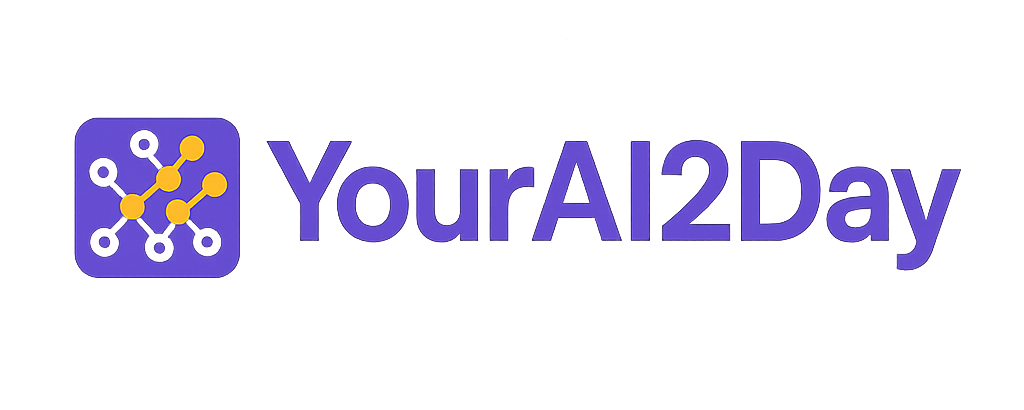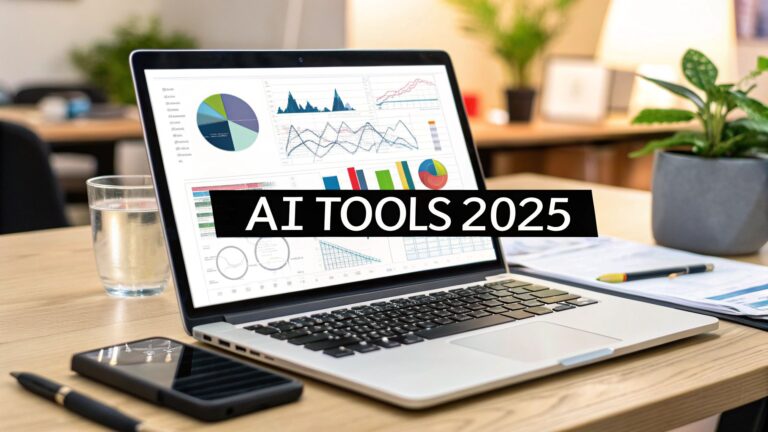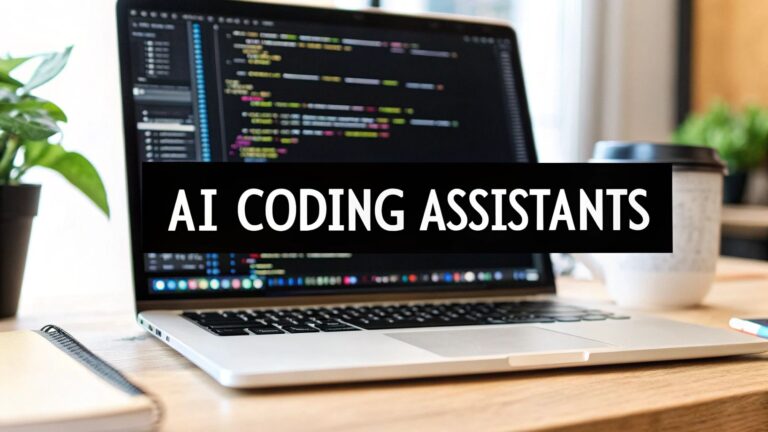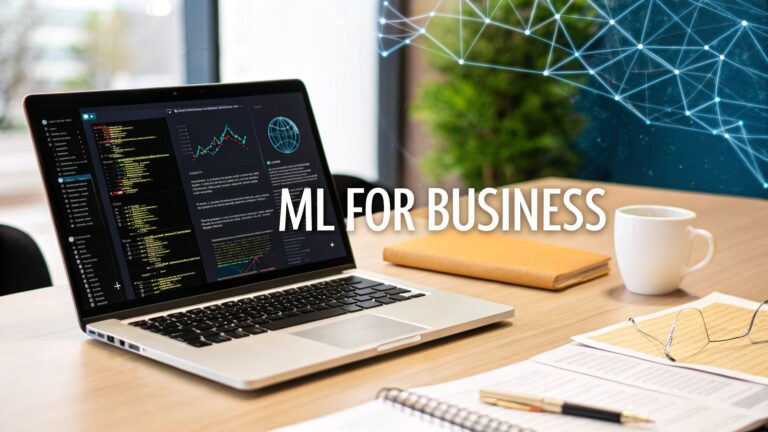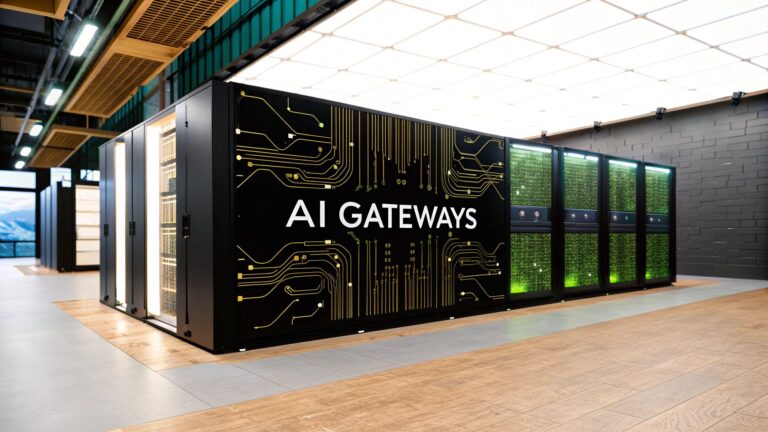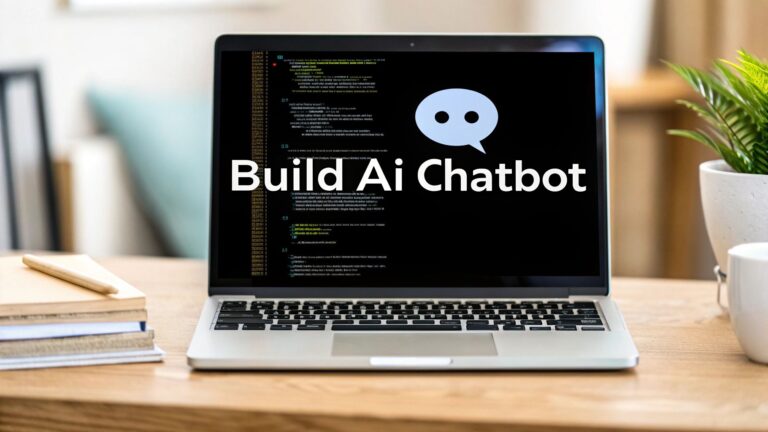7 Incredible Use Case for Machine Learning Examples in 2025
You’ve probably heard the buzzwords: artificial intelligence, neural networks, deep learning. It's easy to think of machine learning as some super-complex, futuristic thing reserved for tech giants. But here's the secret: you're already using it every single day. From the way your phone’s camera magically focuses on faces to the spam filter that keeps your inbox clean, machine learning is the quiet engine powering our modern world.
This article isn't about complicated theory. It's about showing you the real deal. We're going to break down seven powerful examples, explaining how they actually work in simple terms. You won't just learn "what" they are, but "how" and "why" they matter. For each use case for machine learning, we'll offer some expert insight and practical tips you can understand.
As AI researcher Fei-Fei Li famously said, "AI is not a magic wand. It’s a tool, and like any tool, it can be used for good or for bad." Our goal is to pull back the curtain and show you how this tool is being used for good. Whether you're a business owner curious about innovation, a tech enthusiast, or just someone wondering how this AI stuff works, you're in the right place. Let's dive in.
1. Fraud Detection and Prevention in Financial Services
One of the most powerful and widely adopted use cases for machine learning is keeping your money safe. In the world of finance, fraudsters are always coming up with new tricks. Old-school security systems with fixed rules just can't keep up. That's where machine learning comes in. It can analyze millions of transactions in the blink of an eye, learning to spot weird patterns that scream "fraud!"
Think of it like a super-smart detective. The system learns your normal spending habits—where you shop, how much you usually spend, what time of day you buy things. When a new transaction pops up, the model checks dozens of things at once. Is this a huge purchase from a different country at 3 AM? The system instantly flags it as suspicious, either blocking it or sending you that "Was this you?" text message.
How It Works in Practice
You see this in action every day with companies like PayPal and Stripe. PayPal's system is a workhorse, sifting through over 19 million transactions daily to keep its fraud rates incredibly low. Another great example is Stripe Radar, a tool that online businesses use to protect themselves. It uses a team of ML models to give every payment a risk score, automatically blocking the bad ones. It’s like having a digital bodyguard for your online store.
Here’s a quick look at why this is such a big deal for businesses.
As you can see, the impact is huge. It offers 24/7 protection and saves companies a ton of money—something a team of humans could never do at this scale. This lightning-fast analysis is what makes machine learning a game-changer for financial security.
Actionable Takeaways
Curious how companies build these systems? Here are the key ingredients:
- Start with Quality Data: It's simple: garbage in, garbage out. A good model needs a clean, well-organized history of both real and fraudulent transactions to learn from.
- Implement a Feedback Loop: The machine needs to keep learning. When a transaction is flagged, a human analyst confirms if it was actually fraud. This feedback helps the AI get smarter and more accurate over time.
- Balance Security and User Experience: Nobody wants their card declined when buying groceries. The system has to be smart enough to stop criminals without annoying legitimate customers. It's a tricky but essential balancing act.
2. Medical Diagnosis and Disease Prediction
Another amazing use case for machine learning is in healthcare, where it's helping doctors diagnose diseases earlier and more accurately. ML algorithms can look at complex medical data—like MRI scans, patient records, and even DNA—to find tiny patterns that are almost impossible for a person to see. This can lead to life-saving early diagnoses.
Think of it as giving doctors a superpower. These systems are trained on millions of medical images and records, learning what a healthy lung looks like versus one with cancer, or the subtle signs of a rare disease. It's not about replacing doctors. As Dr. Eric Topol, a leading voice in medical AI, puts it, the goal is to "give doctors the gift of time." By handling the heavy data analysis, AI frees up clinicians to focus on what matters most: the patient.
How It Works in Practice
This isn't science fiction; it's happening right now. Google's DeepMind, for instance, created an AI that can check retinal scans for over 50 eye diseases with 94% accuracy—on par with the world's best eye specialists. In another example, a company called PathAI uses machine learning to help pathologists analyze tissue samples. This makes cancer diagnoses faster and more accurate, which can make all the difference for a patient's treatment plan. These tools are powerful partners for doctors, helping them make better, faster decisions.
This advanced support helps cut down on diagnostic errors and speeds up the time it takes to get from a symptom to a treatment plan.
Actionable Takeaways
For healthcare organizations looking to use AI, here are some practical steps:
- Ensure Data Diversity: A medical AI trained only on data from one demographic might fail to diagnose correctly in others. It's crucial to use diverse patient data to avoid building in biases.
- Prioritize a Support Role: The best AI systems act as a "co-pilot" for doctors, not an autopilot. The final call should always come from a qualified medical professional who can consider the full context of the patient's health.
- Validate Rigorously: Before an AI is used on real patients, it has to be tested again and again on different datasets to prove it's safe and accurate. This isn't just a good idea—it's an ethical necessity.
3. Personalized Recommendation Systems
Ever wonder how Netflix just knows what movie you want to watch next? That’s another powerful use case for machine learning: personalized recommendation systems. These engines are the magic behind the custom-tailored experiences on platforms like Netflix, Amazon, and Spotify. By looking at what you’ve watched, bought, or listened to before, they predict what you'll love next.
In the old days, you’d just get a list of "most popular" items. But machine learning goes way deeper. It analyzes huge amounts of data to find hidden connections. It doesn't just know you like action movies; it knows you like action movies starring a certain actor that also have a sci-fi twist. This is how they make discovering new things feel so personal and effortless.
How It Works in Practice
This isn't just a cool feature; it's big business. Netflix says its recommendation algorithm saves it over $1 billion a year because it keeps customers happy and subscribed. What about Amazon? It's estimated that a whopping 35% of its sales come from its "customers who bought this also bought…" recommendations. That’s the power of showing people exactly what they want, before they even know they want it.
And then there's Spotify. Its "Discover Weekly" playlist is a perfect example. Every Monday, it delivers a custom-made playlist of new music it thinks you'll love. It works so well because it doesn’t just look at your listening habits; it looks at the habits of millions of other users with similar tastes. It's like having a friend who's a music expert making you a personal mixtape every week.
Actionable Takeaways
If you're thinking about building a recommendation engine, here are some pro tips:
- Balance Personalization and Novelty: It's great to show people what they like, but you also need to surprise them. The best systems mix in a little "serendipity"—something new and unexpected—to keep things fresh.
- Address the "Cold Start" Problem: What do you recommend to a brand new user? This is a classic challenge. A good approach is to start by recommending popular items or asking them a few questions to get a baseline for their tastes.
- Implement Feedback Mechanisms: Make it easy for users to give feedback. A thumbs-up/thumbs-down, a star rating, or even just tracking what they click on helps the algorithm learn and get better over time.
4. Autonomous Vehicles and Self-Driving Technology
One of the most mind-blowing use cases for machine learning is self-driving cars. This technology aims to let vehicles see the world around them, make split-second decisions, and drive safely without a human touching the wheel. This incredible feat is powered by a whole suite of machine learning models that process a constant stream of data from cameras, LiDAR, and radar sensors.
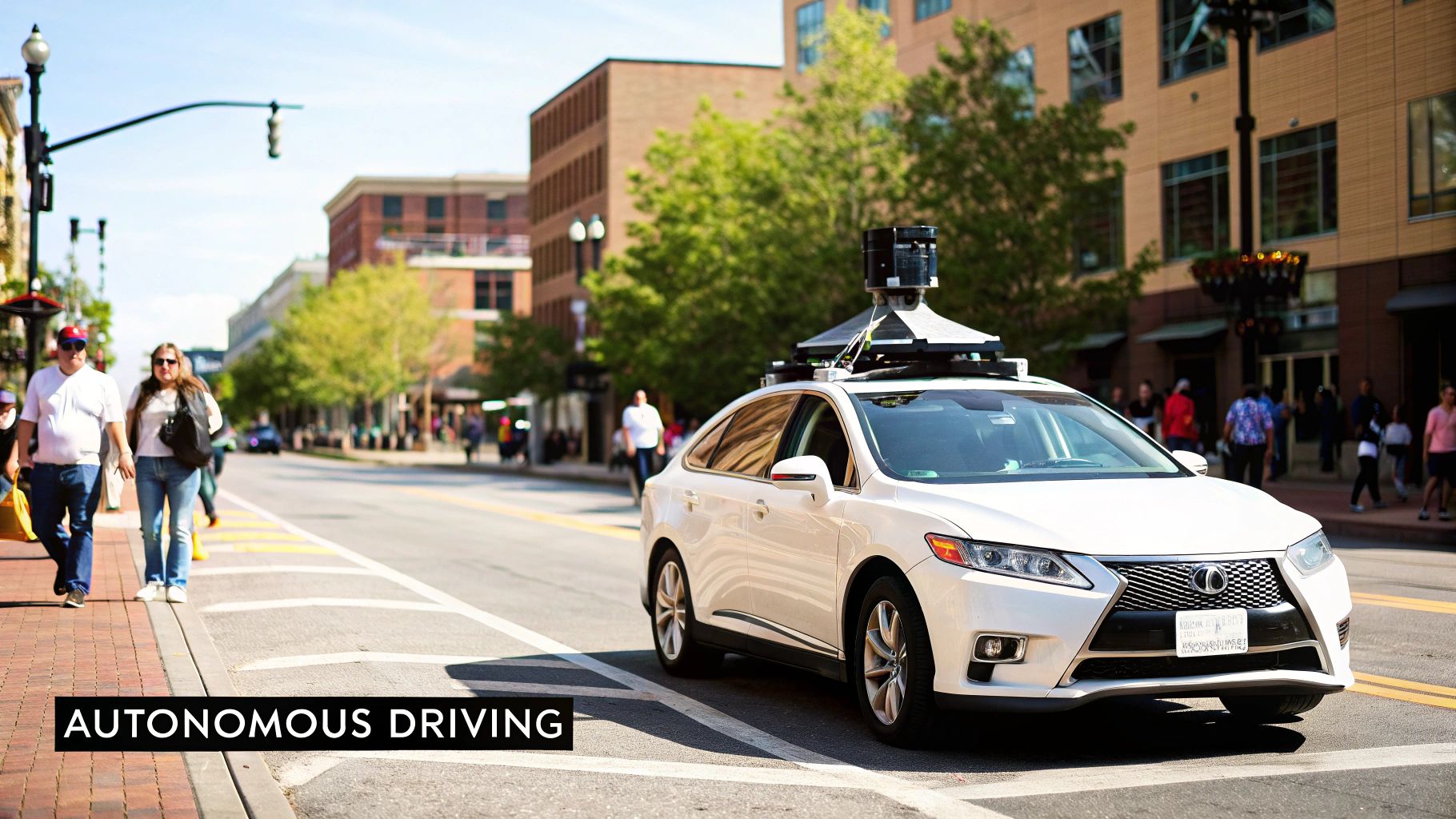
These cars are trained by "driving" millions of miles, both on real roads and in ultra-realistic computer simulations. They use a technique called computer vision to identify everything from pedestrians and cyclists to traffic lights and road signs. All this data is fused together to create a live, 360-degree map of the car's surroundings. It's a complex dance of data and algorithms, often relying on a subset of ML called deep learning. To learn more, check out our guide on deep learning vs. machine learning.
How It Works in Practice
This technology is already on our streets. Waymo, which started as a Google project, runs a completely driverless taxi service in cities like Phoenix and San Francisco. People can literally hail a car with no one in the driver's seat. Then there's Tesla, which uses the data from every Tesla on the road—billions of miles' worth—to train its Autopilot and Full Self-Driving (FSD) features.
Other big names include Cruise (owned by GM), which also operates a robotaxi service, and Mercedes-Benz, which has a certified "Level 3" system that allows drivers to take their hands off the wheel on certain highways. These examples show how machine learning is turning a sci-fi dream into a real-world solution.
Actionable Takeaways
For any company working on autonomous systems, these principles are non-negotiable:
- Prioritize Safety with Simulation: Before a single tire hits the pavement, these systems are tested for millions of virtual miles in simulators. This allows developers to test the AI in dangerous "edge case" scenarios without putting anyone at risk.
- Gather Diverse Training Data: A self-driving car trained only in sunny California would be useless in a snowy Toronto winter. The AI needs to learn from a massive and diverse dataset covering all kinds of weather, lighting, and road conditions.
- Implement Redundant Systems: You can't have a blue screen of death when you're driving 70 mph. Critical systems like steering and braking have multiple backups, so if one part fails, another instantly takes over. Safety is everything.
5. Natural Language Processing for Customer Service
Another game-changing use case for machine learning is in customer service, thanks to something called Natural Language Processing (NLP). Instead of waiting on hold, customers can now interact with smart chatbots and virtual assistants that are available 24/7. These aren't your old, clunky chatbots. They use machine learning to actually understand what you're asking, including the context and even your sentiment.
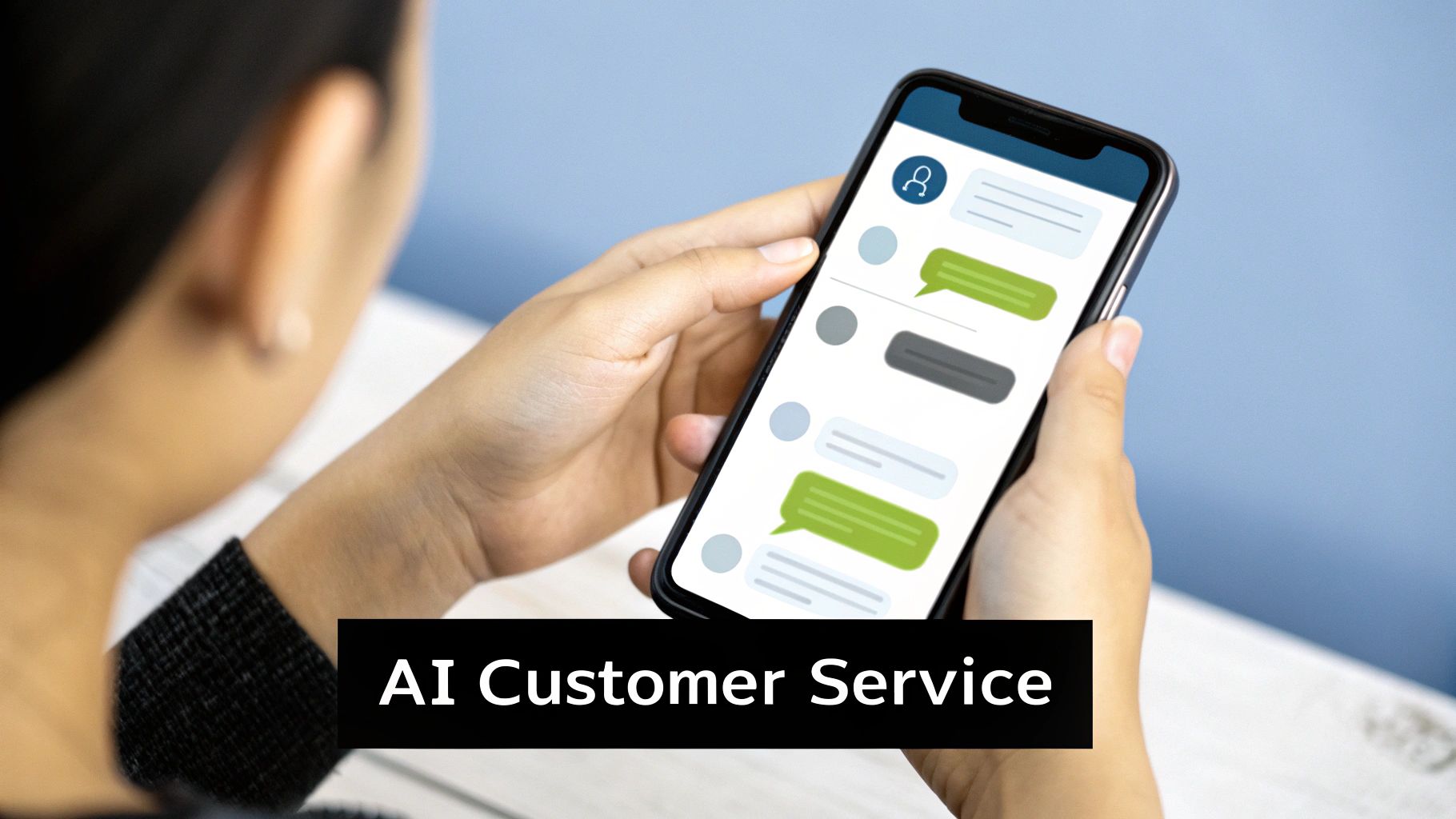
These AI assistants learn from thousands of real customer conversations, getting better and better at interpreting human language. They can handle all the common stuff: answering FAQs, tracking an order, or booking an appointment. And if you ask something too tricky, a good chatbot knows its limits. It will seamlessly hand you over to a human agent, along with the full transcript of your chat so you don't have to repeat yourself. It's the best of both worlds: instant help for simple issues, and expert help for complex ones.
How It Works in Practice
Big brands are all over this. Bank of America's virtual assistant, Erica, has already handled over a billion customer requests, helping people with everything from checking their balance to paying bills. In the travel world, KLM Royal Dutch Airlines uses a chatbot to manage over 15,000 customer chats a week in 13 different languages, helping with flight bookings and updates. These real-world examples prove that AI can handle the routine stuff at a massive scale, letting human agents focus on the tougher problems where they can really make a difference.
This isn't just about saving money; it's about giving customers the fast, convenient support they expect in a digital world.
Actionable Takeaways
Thinking about using a chatbot for your business? Here’s how to do it right:
- Start Small and Focused: Don't try to build a chatbot that can do everything at once. Start by identifying the top 2-3 questions your customers ask all the time, and train your bot to answer those perfectly.
- Design Clear Conversation Flows: A good chatbot guides the user. Map out the conversation like a simple flowchart, making sure there's always a clear next step for the customer.
- Prioritize a Seamless Handoff: The most frustrating thing is getting stuck in a "chatbot loop." Make it super easy for a customer to say "I need to talk to a human," and ensure that transfer is quick and painless.
6. Predictive Maintenance in Manufacturing
Machine learning is also revolutionizing old-school industries like manufacturing. On a factory floor, when a key piece of equipment breaks down unexpectedly, it can cost a company millions. Traditionally, maintenance was done on a fixed schedule (e.g., "service this machine every 6 months"). But that’s inefficient. Machine learning offers a much smarter way: predictive maintenance.
Here's how it works: sensors are placed on critical machinery to monitor things like temperature, vibration, and noise. Machine learning algorithms analyze this constant stream of data to learn what "normal" looks like. They can then detect tiny, almost invisible changes that signal a part is starting to wear out. The system can then alert the maintenance team that a failure is likely to happen in, say, the next two weeks, so they can schedule a repair during planned downtime instead of in the middle of a huge production run.
How It Works in Practice
Industrial giants like General Electric (GE) and Siemens are leaders in this field. GE's "Predix" platform monitors things like jet engines and power turbines, predicting when a part might fail. This saves airlines millions by preventing flight delays and cancellations. Similarly, Siemens' "MindSphere" platform helps factories cut down on surprise breakdowns by up to 50%. This isn't just about fixing things before they break; it's about making the entire operation more efficient and reliable.
Here’s a snapshot of the benefits of this approach.
As you can see, the benefits go way beyond just avoiding breakdowns. It's about getting the most out of expensive equipment, improving safety, and making the entire business run smoother. Machine learning gives engineers the superpower of seeing into the future.
Actionable Takeaways
For any industrial company looking to get started, here's a simple roadmap:
- Start with Critical Assets: Don't try to monitor every machine at once. Focus on the most important equipment—the ones where a breakdown would cause the biggest headache. This is where you'll see the biggest and fastest return on your investment.
- Ensure High-Quality Sensor Data: The AI's predictions are only as good as the data it gets. It's crucial to use good sensors that are properly installed and maintained to feed the model accurate information.
- Combine AI with Human Expertise: The AI can raise a red flag, but you still need an experienced engineer to figure out exactly what's wrong. The best systems combine the predictive power of AI with the hands-on knowledge of human experts.
7. Credit Scoring and Loan Approval
For decades, getting a loan has depended on a simple credit score. But this old system can be unfair, often excluding people who are perfectly capable of repaying a loan but have a thin credit file. Machine learning is changing this by creating a much smarter and fairer way to assess credit risk.
Instead of just looking at a few data points, machine learning models can analyze hundreds or even thousands of variables. They can look at things like utility bill payments, rent history, and even job stability to get a much fuller picture of a person's financial health. This allows lenders to make faster, more accurate, and more inclusive decisions. It's about opening up access to credit for people who deserve it but were invisible to the old system.
How It Works in Practice
Fintech companies like Upstart and Affirm are leading the charge. Upstart uses AI to look beyond traditional credit scores and says its model results in 75% fewer defaults compared to old-school methods. You've probably seen Affirm when shopping online; it uses machine learning to give you an instant "buy now, pay later" loan decision right at checkout. Even older industries are adapting. A company called ZestFinance helps auto lenders use smarter ML models to cut their default rates by as much as 50%.
Here’s a quick look at why this is such a powerful shift.
As this shows, it's a win-win. Lenders reduce their risk, and more people get access to the credit they need to buy a car, a home, or start a business. This is a perfect example of how implementing AI in a business can be both profitable and socially responsible.
Actionable Takeaways
For any company in lending, here are the keys to using ML responsibly:
- Prioritize Fairness and Compliance: Using more data comes with a huge responsibility. It's absolutely critical to make sure the AI isn't accidentally discriminating against certain groups. Regular audits for bias are a must.
- Embrace Explainability: If you deny someone a loan, you have to be able to explain why. Regulators and customers demand it. Companies must use models that are "explainable," so they can understand and justify the AI's decisions.
- Validate Rigorously: The economy is always changing. A model that worked great last year might not work this year. Lenders need to constantly test their models against new data to make sure they are still accurate and reliable.
Use Case Comparison of 7 ML Applications
| Application Area | Implementation Complexity 🔄 | Resource Requirements ⚡ | Expected Outcomes 📊 | Ideal Use Cases 💡 | Key Advantages ⭐ |
|---|---|---|---|---|---|
| Fraud Detection and Prevention | High: Requires large labeled datasets and complex models | High: Needs extensive data infrastructure and expertise | 50-70% reduction in losses; real-time fraud detection | Financial institutions monitoring transactions | Scales easily; adaptive; reduces false positives |
| Medical Diagnosis and Disease Prediction | Very High: FDA approval; extensive validation | High: Clinical data, imaging, genomic data, expert input | 20-30% improved diagnostic accuracy; early disease detection | Healthcare diagnostics and personalized treatment | Consistent, fast, supports rare disease detection |
| Personalized Recommendation Systems | Medium: Hybrid models and real-time updates | Medium to High: Large user and item datasets | 30-60% increase in engagement; higher revenue | E-commerce, streaming services, social media platforms | Boosts retention; enhances user satisfaction |
| Autonomous Vehicles and Self-Driving | Very High: Complex sensor fusion and safety frameworks | Very High: Massive data, advanced hardware, simulations | Potential 90% accident reduction; increased mobility | Transportation, logistics, ride-hailing | Safety improvements; cost reduction; environmental impact |
| NLP for Customer Service | Medium: Intent and sentiment analysis; multi-language | Medium: Large conversational datasets and model training | 30-50% customer service cost reduction; 24/7 availability | Customer support, virtual assistants | Instant replies; scalability; frees human agents |
| Predictive Maintenance in Manufacturing | High: Sensor data integration and historical failure data | Medium to High: Sensors, data platforms, engineering input | 25-45% downtime reduction; 20-30% longer equipment life | Industrial equipment monitoring; manufacturing | Cost savings; improved safety; optimized maintenance |
| Credit Scoring and Loan Approval | High: Regulatory compliance; explainability critical | Medium to High: Diverse financial and alternative data | 15-30% lower default rates; faster approvals | Lending, credit risk assessment | More approvals; fairer lending; operational efficiency |
What's Next? Putting Machine Learning to Work for You
So, we've journeyed through the world of machine learning, and one thing is crystal clear: this isn't some far-off fantasy. It's a real tool that's solving real problems, right now. From protecting your bank account to helping your doctor make a diagnosis, machine learning is quietly making our world safer, more efficient, and more personalized.
The common thread in every powerful use case for machine learning is turning data into smart decisions. Whether it's helping you find your next favorite movie or preventing a massive factory shutdown, it's all about using information to predict what's next and act on it. The goal is to turn a sea of raw data into clear, actionable intelligence.
Your Path Forward with Machine Learning
If you're new to all this, it can feel like a lot to take in. But you don't need to be a data scientist to get started. The key is to start with a "why"—a problem you want to solve—before you worry about the "how."
Here are a few simple steps to begin your journey:
- Identify a High-Impact Problem: Think about your job or your daily life. Is there a repetitive task that bores you to tears? A decision that feels like a pure guessing game? That's a perfect candidate for a machine learning solution.
- Explore No-Code/Low-Code Platforms: You don't need to write a single line of code to start experimenting. Tools like Google's AutoML or Microsoft's Azure Machine Learning Studio have user-friendly interfaces that let you build your own simple models. Getting your hands dirty is the best way to learn.
- Stay Informed and Curious: AI is moving at lightning speed. As AI expert Dr. Andrew Ng often says, continuous learning is key. Try to spend a little time each week reading about new tools, breakthroughs, and cool projects.
The Ultimate Takeaway: From Insight to Impact
The real magic of machine learning happens when we stop just talking about it and start using it to make things better. Every use case for machine learning we've looked at shows a move away from just reacting to problems and toward proactively shaping the future. This isn't just a tech upgrade; it's a new way of thinking that gives businesses a massive advantage. Understanding these ideas is no longer just for techies—it's for anyone who wants to build a smarter future.
Ready to stay ahead of the curve and discover the next wave of AI innovation? Follow YourAI2Day for daily insights, expert analysis, and the latest news on a new AI tool every day. Visit YourAI2Day to join a community of forward-thinkers and supercharge your AI knowledge.
